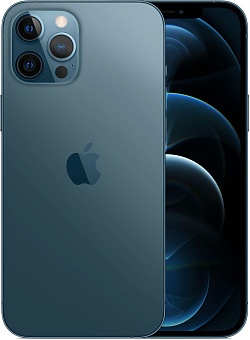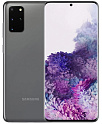 Apple iPhone 12 Pro Max
Apple iPhone 12 Pro Max
 Vivo V5
Vivo V5
Comparision Apple iPhone 12 Pro Max vs Vivo V5
Grade
Top specs and features
AnTuTu
Main camera resolution
iOS version
Battery capacity
Pixel density per screen inch
Description
Camera Comparison In DxOMark tests, Apple iPhone 12 Pro Max scored 129 points. Vivo V5 scored There is no data in the DxOMark camera test.
Resolution of the main camera sensor for Apple iPhone 12 Pro Max 12 MP, versus 13 MP for Vivo V5. Main camera aperture at Apple iPhone 12 Pro Max f/1.6. At Vivo V5 aperture reaches f/There is no data. The first smartphone has a LED flash, the second one has a LED flash.
The resolution of the front camera for the first device is 12 MP vs. 20.2 MP for Vivo V5. As for aperture, the first smartphone has f/2.2 versus f/2.2 for the second.
Performance comparison. Apple iPhone 12 Pro Max has the Apple A14 Bionic chip installed. The processor frequency reaches 3.1 GHz. Apple GPU is responsible for graphics. The frequency of the graphics core reaches There is no data MHz. Apple iPhone 12 Pro Max has 6 GB of RAM installed. The maximum amount of RAM for this model reaches There is no data. The RAM version is DDR4.
Vivo V5 is equipped with MediaTek MT6750. The processor frequency is 1.5 GHz. In terms of graphics, the ARM Mali-T860 kernel is used here. The video core is capable of operating at a frequency of up to 350 MHz. The machine is equipped with 4 GB of RAM. RAM version for Vivo V5 DDRThere is no data.
Tests in benchmarks. In the AnTuTu benchmark, Apple iPhone 12 Pro Max scored 572334 points out of 911349 points possible. Vivo V5 scored 40498 on AnTuTu.
Comparison of displays. On board Apple iPhone 12 Pro Max installed OLED screen matrix. The display resolution is 6.7 inches. The pixel density reaches 457dpi screen.
Apple iPhone 12 Pro Max's screen refresh rate is 60 Hz. And the brightness of the display reaches 831 cd/m².
Vivo V5 has a IPS LCD matrix with a diagonal of 5.5 inches. Here the pixel density is 267 ppi. The screen refresh rate is There is no data Hz. And the display brightness reaches There is no data cd/m².
Equipment and general characteristics. Apple iPhone 12 Pro Max came out in There is no data. Vivo V5 submitted There is no data.
The first smartphone has an IP68 class of protection against dust and moisture, compared to the IPThere is no data class of the second device.
Apple iPhone 12 Pro Max supports up to 2 sim cards, versus 2 for Vivo V5.
Apple iPhone 12 Pro Max weighs 226 grams, versus 154 grams for Vivo V5. The thickness of the first smartphone is 7.4 mm, versus 7.6 mm for the second one.
Apple iPhone 12 Pro Max has USB version 2 and Vivo V5 has got 2 USB version. The first smartphone is running There is no data version of Android. The second device has the 6 version of Android installed. Apple iPhone 12 Pro Max is capable of supporting the 802.11 a/b/g/n/ac Wi-Fi version. Vivo V5 supports the 802.11 b/g/n Wi-Fi version.
The first smartphone supports memory cards up to There is no data GB, the second up to There is no data GB.
Why Apple iPhone 12 Pro Max is better than Vivo V5
- AnTuTu 572334 против 40498 , more on 1313%
- Battery capacity 3687 mAh против 3000 mAh, more on 23%
- Pixel density per screen inch 457 ppi против 267 ppi, more on 71%
- Display size 6.7 " против 5.5 ", more on 22%
- RAM 6 GB против 4 GB, more on 50%
- Cumulative memory 512 против 32 , more on 1500%
Apple iPhone 12 Pro Max vs Vivo V5: highlights


Performance
Display
Camera
Battery
Other
Main characteristics
Interfaces and communications
FAQ
How do Apple iPhone 12 Pro Max and Vivo V5 perform in benchmarks?
According to the AnTuTu benchmark, Apple iPhone 12 Pro Max scored 572334 points. Vivo V5 scored 40498 on AnTuTu test out of 911349 possible.
What camera do smartphones have?
Resolution of the main camera sensor for Apple iPhone 12 Pro Max 12 MP, versus 13 MP for Vivo V5.
The front camera of the first smartphone received a resolution of 12 MP, versus 20.2 MP of the second.
Which accumulator is better for Apple iPhone 12 Pro Max or Vivo V5?
The battery capacity of Apple iPhone 12 Pro Max is 3687 mAh, versus 3000 for Vivo V5.
What kind of memory?
As for the built-in memory, it is 512 GB for the first device, and 32 GB for the second.
What screen do smartphones have
The screen of the first smartphone is equipped with a OLED matrix, the second with a IPS LCD matrix.
Which processor is better - Apple iPhone 12 Pro Max or Vivo V5?
Apple iPhone 12 Pro Max has Apple A14 Bionic on board, the other has MediaTek MT6750.
What is the screen resolution?
The display resolution of Apple iPhone 12 Pro Max is 6.7 inches, versus 5.5 inches for Vivo V5.
How much do they weigh?
Apple iPhone 12 Pro Max weighs 226 grams, versus 154 grams for Vivo V5.
How many SIM cards are supported?
The first smartphone can support up to 2, versus 2 for the second.
When did the sales start?
Apple iPhone 12 Pro Max was announced in There is no data. Vivo V5 in There is no data.
What operating system version are you using?
Apple iPhone 12 Pro Max There is no data has the Android version, Vivo V5 6 has the Android version.
How much memory can be installed on smartphones?
Apple iPhone 12 Pro Max supports memory cards up to There is no data GB and Vivo V5 up to There is no data GB.
What kind of moisture protection?
IP68 of Apple iPhone 12 Pro Max versus IPThere is no data of Vivo V5.





























